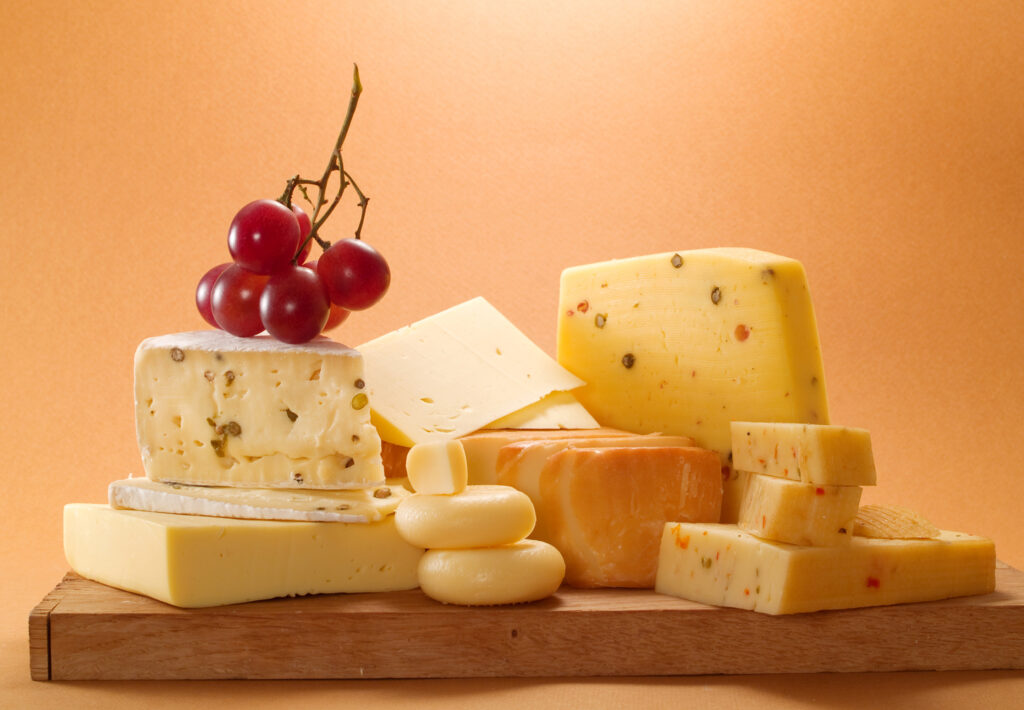In the diverse world of cheeses, semi-hard cheese has consistently enjoyed high popularity. Offering a complex flavor profile and a distinctive texture, semi-hard cheese is not only a staple in various dishes but also provides a wealth of health benefits. Intrigued? Let’s delve deeper into the world of semi-hard cheese.
What is Semi-Hard Cheese?
Semi-hard cheese falls somewhere between hard and soft cheeses in terms of texture. Its defining characteristic is its ability to be sliced easily while maintaining a firm enough consistency to prevent crumbling. Semi-hard cheese has gained widespread popularity due to its unique flavor and balanced taste.
With roots dating back hundreds of years, semi-hard cheese boasts a variety of regional variations, particularly in Europe, including the Netherlands, Switzerland, and Italy. It has often been an integral part of local culinary traditions, serving both as a snack and as a key ingredient in various dishes.
Also Read: 6 Biggest Cheese Producing Countries in the World
Types of Semi Hard Cheese
Some common types of semi-hard cheese you might encounter include:
- Edam: Originating from the Netherlands, Edam cheese is typically round and coated in red wax. It offers a mild, slightly nutty flavor.
- Gouda: Another Dutch export, Gouda is one of the world’s most popular cheeses. It has a slightly sweet taste with a delicate, nutty aroma. Aged Gouda tends to be firmer and develops a more complex flavor.
- Emmental: Renowned for its large holes, Emmental is a Swiss cheese with a mild, slightly sweet flavor. The holes are a result of fermentation during aging.
- Fontina: Hailing from Italy, Fontina is a semi-hard cheese with a rich, slightly spicy taste. It is a popular ingredient in Italian cuisine, particularly in fondue, due to its excellent melting properties.
Also Read: Low-Fat Cheeses That Helps With Your Diet
Health Benefits of Semi Hard Cheese
Beyond its delicious taste, semi-hard cheese offers a range of health benefits. Like most cheeses, semi-hard varieties are rich in essential nutrients such as calcium, protein, and vitamin B12. Here are some of the benefits you can enjoy:
- Bone Health: The high calcium content in semi-hard cheese is excellent for maintaining strong bones and teeth. Regular consumption can help prevent osteoporosis and maintain bone density.
- Quality Protein: Semi-hard cheese is a source of high-quality protein, essential for building and repairing muscles and tissues. The protein in cheese is easily absorbed by the body.
Tips for Enjoying Semi Hard Cheese
Ready to savor the deliciousness of semi-hard cheese? Here are a few ideas:
- As a snack: Cut cheese into cubes and serve with fresh fruits like grapes or apples. For a more elaborate treat, create a cheese platter featuring various cheeses, crackers, nuts, and fruits.
- As a topping: Semi-hard cheese makes an excellent topping for pizzas, quesadillas, or pancakes. Try grating or melting it for added flavor.
- In cooked dishes: Incorporate semi-hard cheese into recipes like lasagna, quiche, or pasta.
Semi-hard cheese is a versatile and delicious addition to your diet. With its rich flavor and nutritional benefits, it deserves a prominent place on your culinary journey. Whether you’re a seasoned cheese connoisseur or simply looking to explore new tastes, there’s a semi-hard cheese out there to satisfy your palate. Don’t forget to try semi-hard cheese options from Bel, Babybel Original Cheese!







